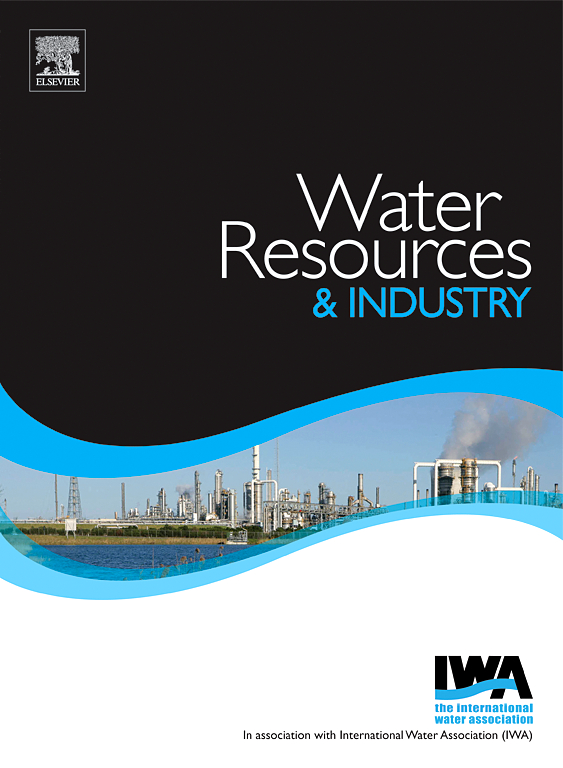饮用水处理厂及配水管网水质及微生物再生评价
IF 7.5
3区 工程技术
Q1 WATER RESOURCES
引用次数: 0
摘要
饮用水的反复污染和分配网络中的微生物再生仍然是供水当局最关心的问题。这在发展中国家很常见,那里的基础设施老化和欠发达,加上淡水资源的退化,加剧了这一问题。在这里,报告了南非典型的水处理和分配系统的饮用水质量的全年测量数据,每周一次。结果证实,所研究的饮用水处理厂依赖于严重退化的淡水,主要受到微生物污染的影响,这可能意味着在接收水体中排放未经处理或处理不良的废水,这是中低收入国家(LMICs)的一个普遍问题。在大多数情况下,淡水得到了有效处理(例如,大肠杆菌去除率100%,总大肠菌群、浊度和颜色去除率分别超过99%、92%和83%),以满足南非的饮用水质量标准和世界卫生组织(世卫组织)准则。然而,在一些月度测量中,某些污染物(如氨)高于规定限值,这表明需要在操作上改进水处理和/或控制未经处理或处理不当的废水在集水区的排放。令人震惊的是,在分销网络中发现了微生物再生,这与(p <;0.01),与水在每个分配网络和节点内运行的距离(从0到101公里)有关。此外,还观察到水质有很大的季节性变化,冬季水质较差,这可能与环境因素相结合,以及部分配电系统靠近地面或地面以上。总的来说,氯浓度与微生物失效之间存在明显的相关性。这可能是由于对氯的需求量很大,这使得残氯系统无法存在,从而在更大程度上创造了一个有利于微生物再生的环境。因此,可以得出结论,高氯需求是供水网络内微生物再生的主要因素,因此,需要进行全面的氯需求和衰变研究,以确定是否需要氯升压站,特别是在网络的远端。这将通知可持续地补充氯残留在分配的水,从而有效地抑制微生物再生。尽管如此,高氯含量并不是万灵药,因为这可能导致形成有毒和致癌的消毒副产物,如三卤甲烷(THMs)。因此,首先要把重点放在保障淡水资源的质量上。本文章由计算机程序翻译,如有差异,请以英文原文为准。
Assessment of the water quality and microbial regrowth in drinking water treatment plants and the distribution network
Recurring contamination of drinking water and microbial regrowth in distribution networks remains an issue of prime concern to water provision authorities. This is common in the developing world, where aging and under-developed infrastructure along with degraded freshwater resources exacerbate the problem. Here, the year-round measurements, on a weekly basis, of the quality of drinking water from a typical water treatment and distribution system in the South African setting are reported. Results confirmed that the drinking water treatment plants under study rely on heavily degraded freshwater, mainly affected by microbial contamination which could suggest the release of untreated or poorly treated wastewater in receiving water bodies, a common problem in low-and-medium-income countries (LMICs). In most cases, freshwater was effectively treated (e.g., 100% removal for E. coli and over 99%, 92%, and 83% removal for total coliforms, turbidity, and colour, respectively) to meet the drinking water quality standards for South Africa and the world health organisation (WHO) guidelines. Yet, in some monthly measurements, certain contaminants such as ammonia were above the prescribed limits, suggesting the need to operationally improve water treatment and/or curbing the release of untreated or poorly treated wastewater in the catchment. Alarmingly, microbial regrowth was identified within the distribution networks, and this was significantly correlated (p < 0.01) with the distance (from 0 to 101 km) that the water travels within each distribution network and nodes. Also, large seasonal variations in the water quality were observed, with water quality being poorer during winter, likely tracing back to environmental factors in combination with parts of the distribution system being laid proximal to the surface or above ground. Overall, a clear correlation between the chlorine concentration and microbial failure was observed. This could be attributed to high chlorine demand, which devoids the system of residual chlorine, thus, to a larger extent, creating an environment that is conducive to microbial regrowth. Therefore, it can be concluded that high chlorine demand is the main contributor towards microbial regrowth within the water distribution networks, and, as such, comprehensive chlorine demand and decay studies are needed to identify whether chlorine booster stations are required, particularly at the distal ends of the network. This will inform the sustainable top-up of chlorine residual in the distributed water, hence effectively suppressing microbial regrowth. Albeit, high chlorine levels are not a panacea, since these can lead to the formation of toxic and carcinogenic disinfection by-products such as trihalomethanes (THMs). Therefore, first and foremost, focus should be placed on safeguarding the quality of freshwater resources.
求助全文
通过发布文献求助,成功后即可免费获取论文全文。
去求助
来源期刊

Water Resources and Industry
Social Sciences-Geography, Planning and Development
CiteScore
8.10
自引率
5.90%
发文量
23
审稿时长
75 days
期刊介绍:
Water Resources and Industry moves research to innovation by focusing on the role industry plays in the exploitation, management and treatment of water resources. Different industries use radically different water resources in their production processes, while they produce, treat and dispose a wide variety of wastewater qualities. Depending on the geographical location of the facilities, the impact on the local resources will vary, pre-empting the applicability of one single approach. The aims and scope of the journal include: -Industrial water footprint assessment - an evaluation of tools and methodologies -What constitutes good corporate governance and policy and how to evaluate water-related risk -What constitutes good stakeholder collaboration and engagement -New technologies enabling companies to better manage water resources -Integration of water and energy and of water treatment and production processes in industry
 求助内容:
求助内容: 应助结果提醒方式:
应助结果提醒方式:


